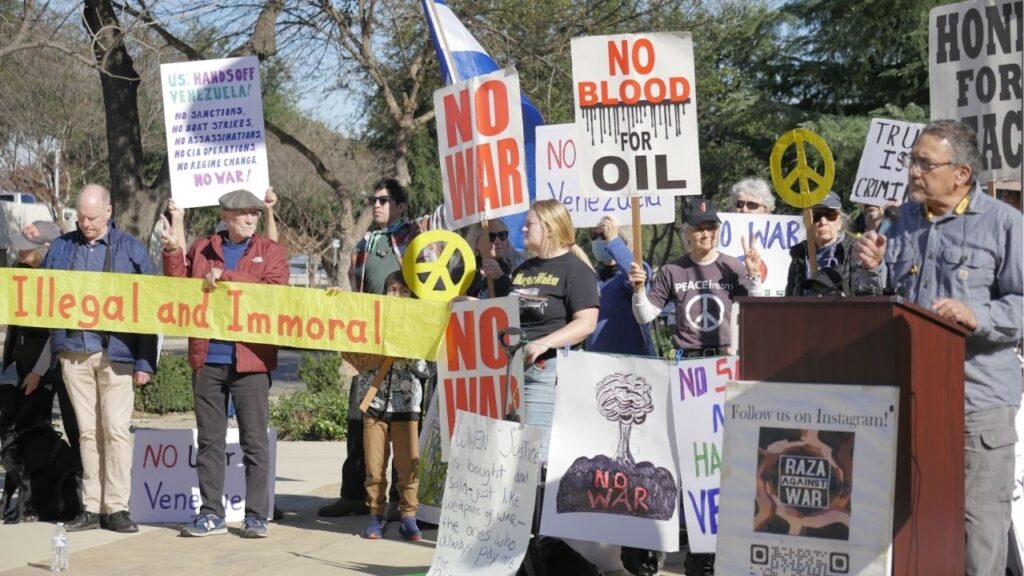Share
SACRAMENTO — Impoverished towns in the shadow of Mount Shasta. Rustic Gold Rush cities in the Sierra Nevada foothills. High-dollar resort communities on the shores of Lake Tahoe. Ritzy Los Angeles County suburbs.
A McClatchy analysis reveals more than 350,000 Californians live in towns and cities that exist almost entirely within “very high fire hazard severity zones” — Cal Fire’s designation for places highly vulnerable to devastating wildfires. These designations have proven eerily predictive about some of the state’s most destructive wildfires in recent years, including the Camp Fire, the worst in state history.
Nearly all of Paradise is colored in bright red on Cal Fire’s map — practically the entire town was at severe risk before the Camp Fire raged through last November, burning the majority of homes in its path and killing 85 people.
Malibu, where the Woolsey Fire burned more than 400 homes last year, also falls within very high hazard zones. As does the small Lake County town of Cobb, much of which was destroyed by the Valley Fire in 2015.
“There’s a lot of Paradises out there,” said Max Moritz, a fire specialist at UC Santa Barbara.
All told, more than 2.7 million Californians live in very high fire hazard severity zones, from trailers off quiet dirt roads in the forest to mansions in the state’s largest cities, according to the analysis, which is based on 2010 block-level census data. The California Department of Forestry and Fire Protection says its maps show places where wildfires are likely to be extreme due to factors including vegetation and topography.

Cal Fire is making new fire hazard maps — ready in a year or so — that will incorporate regional wind patterns and other climate factors. In the meantime, experts say the current maps, created about a decade ago, still provide an important guide to predict where wildfires could do the most damage, in the same way floodplain maps highlight areas that could be hit hardest during severe storms.
The at-risk communities identified by McClatchy also should serve as a starting point for prioritizing how California should spend money on retrofits and other fire-safety programs, Moritz said.
California’s state-of-the-art building codes help protect homes from wildfire in the most vulnerable areas, experts say. But the codes only apply to new construction. A bill introduced by Assemblyman Jim Wood would provide cash to help Californians retrofit older homes.
“This will go a long way toward these different municipalities (in showing) that they deserve funding,” Moritz said.
McClatchy identified more than 75 towns and cities with populations over 1,000 where, like Paradise, at least 90 percent of residents live within the Cal Fire “very high fire hazard severity zones.”
Here are snapshots of 10, and the unique challenges they face:
Shingletown: A Miniature Paradise
Population (2010) — 2,283 ‘ In Very High fire Hazard Severity Zone — 2,283

Like Paradise, the unincorporated community sits atop a ridge, and is covered in tall trees and thick brush — ingredients for a major wildfire. Shingletown was originally named Shingle Camp, for the workers who cut roofing slats from timber to supply miners during the Gold Rush era.
“We grow trees like nobody’s business up here,” said Tom Twist, a member of the Shingletown Fire Safe Council, a volunteer organization. Twist, who’s lived in the community off and on since the 1970s, said that when the weather is warm he’ll walk his property, pulling up seedlings in an almost futile effort to eliminate potential fuels.
“I’ll pull 20 or 30 seedlings a day out of the ground,” he said. “It’s almost like when I walk over there, there’s 20 or 30. When I walk back, there’s another 20 or 30.”
Just like Paradise, escaping the ridge in a fast-moving fire wouldn’t be easy; Shingletown’s main drag is winding, narrow Highway 44. And, like in Paradise, the presence of an older population would make evacuation more difficult; Shingletown’s median age is 61, according to census figures.
It’s little wonder that when Gov. Gavin Newsom ordered Cal Fire to develop a list of urgent fire-safety projects, a plan to trim 1,124 acres of vegetation along Highway 44 came up as the top priority out of 35 projects around the state.
Locals say they’re glad the state is paying attention to a problem they know too well. The community had to evacuate when the Ponderosa Fire, started by a lightning strike, hit in 2012. The fire burned 27,676 acres — 43 square miles — and torched 52 homes in the vicinity.
“We’re intimately aware of the dangers up here,” Twist said.
Nevada City: Picturesque and Risky
Population (2010) — 3,068 ‘ In Very High Fire Hazard Severity Zone — 3,064

Now, the brush is ominous — an ignition source that could torch the home built in 1859 that her family has lived in for five generations.
The same anxiety also applies to the cedars, pines and brush covering the hills around this foothill city of about 3,100 people, many of whom live or work in wooden buildings dating back to the the Gold Rush era.
“It’s very scary, especially since it’s such a cute little town I’ve been living in my whole life,” Guyette said recently as she walked down the city’s historic Broad Street, which looks like it fell out of a photo from a museum exhibit.
City officials agree that the wooded draws, steep hillsides, narrow residential streets, ancient homes and thick urban tree canopy that define the character of the city also make it particularly at risk if a fire burns through.
“Nevada City’s single largest risk for human life and financial loss is fire,” Nevada City’s hazard mitigation plan reads.
In recent decades, the city also has had some near misses with fire, including one major close call.
In 1988, heavy winds pushed the 49er Fire through 52 square miles of western Nevada County, burning 312 buildings and dozens of cars.
“At the time it was considered an anomalous event,” said Billy Spearing of the Fire Safe Council of Nevada County. “It was not the normal for them then.”
With such fires becoming the new normal, Cal Fire is planning to cut a 1,802 acre fire break in southwest Nevada County in terrain that hasn’t burned in a century, helping protect both Nevada City and the adjacent community of Grass Valley, home to more than 12,000.
Nevada City also embarked on an online “Goat Fund Me” campaign to raise $25,000 to hire farmers to use their goats to eat dense brush in more than 450 acres of city-owned greenbelt.
The goats recently chewed a swath through Pioneer Park near Margaret Rodda’s Victorian home, which sits on a steep draw above a creek. But she’s still worried.
“All it takes is a drunk with a cigarette,” she said.
The goats inspired Guyette. She said she might spend the $500 to put a herder’s goats to work on the thorny thicket of blackberries behind her mother’s house.
“We need to get rid of them,” she said.
Colfax: Fire Is on Everyone’s Minds
Population (2010) — 1,963 ‘ In Very High Fire Hazard Severity Zone —1,963

“The people who live here have a true understanding,” said Colfax City Manager Wes Heathcock. “It’s always on the back of people’s minds, especially with the most recent fires, the Camp Fire. We have a similar makeup here.”
At night in the summer, Aimee Costa, who lives on a hill above the elementary school, sometimes keeps her window open, the better to hear ominous sounds.
“You’re laying in bed . listening for that lick, that smack, that pop sound,” Costa said, describing the sound flames would make if they were chewing pine needles, brush and leaves.
A former supply hub for gold mining camps, Colfax sits a few miles from the edge of the Tahoe National Forest in the lower-elevation Sierra. It straddles Interstate 80 and serves as the last major stop between the Sacramento metropolitan area and the Lake Tahoe region. Horses graze beside deer on large ranchettes in the rugged brushy canyons along the outskirts of the city.
The terrain poses a major fire risk.
In July 2015, the Lowell Fire erupted near Colfax and chewed up thousands of acres along the north side of the freeway, forcing evacuations in adjacent Nevada County. In the years since, Heathcock said the city has been working with state officials on “fuelbreak” projects, including a spot near the high school and elementary school, which has been eyed as an evacuation site.
Gene Mapa, who lived in Paradise and escaped the Camp Fire with some family photographs — and nothing else — has relocated to Colfax, where he already owned a second home. But he knows he hasn’t escaped the fire risk; his property just outside the city limits would be threatened by a windy firestorm like the one that engulfed Paradise.
“With that wind, there would be no stopping it anywhere,” Mapa said.
Kings Beach: Tourists Seek Fun, Bring Fire Danger
Population (2010) — 3,796 ‘ In Very High Fire Hazard Severity Zone —3,796

That’s a big part of the problem.
Because so much of the population comes and goes, it becomes harder to get people to treat wildfire risk with the respect it deserves, said Erin Holland, a spokeswoman for the North Tahoe Fire Protection District. One of the district’s six stations is in Kings Beach.
“It is definitely a challenge because we have so many homes that are vacation homes,” she said. “It’s really a challenge to educate those visitors . They want to have a camp fire.”
Tahoe’s vulnerability to major fires was brought home dramatically in recent years. The Angora Fire in 2007, while it was confined to the south shore area, left physical and emotional scars on the entire basin after burning through 3,100 acres.
Holland said getting the region’s property owners and visitors to observe “defensible space” regulations is particularly difficult. Those rules call for clearing brush 100 feet around buildings and include stricter rules regarding vegetation immediately adjacent to structures.
Violators can be subject to citations, but “the goal is to really educate people, to get people complying,” Holland said. “We go the education route rather than the citation route.”
Pollock Pines: Do the Transplants Get It?
Population (2010) — 6,877 ‘ In Very High Fire Hazard Severity Zone — 6,533

Heather Campbell only wishes the newbies had a better understanding of what all that timber represents.
Campbell, a retired U.S. Forest Service employee who’s lived in Pollock Pines since the 1990s, is the head of the Pollock Pines-Camino Fire Safe Council, a volunteer group.
In the past few years her organization has received hundreds of thousands of dollars in grants, mainly from the state’s “cap and trade” carbon trading program, to trim vegetation on the ridgeline south of Highway 50.
That’s all well and good, she said, but more needs to be done. And the people of Pollock Pines, including the newcomers, have to realize what’s at stake.
“Here, everybody allows all the saplings and brush to grow and they don’t weed it out,” she said. “All these roads are incredibly dangerous, when it’s so easy to take out pruners. Take out your pruners!”
She said memories are still vivid of the Sand Fire in 2014. That fire burned 4,200 acres and 20 homes and came dangerously close to forcing a major evacuation in Pollock Pines and surrounding communities.
“They were going to evacuate 9,000 people,” she said. “They were predicting the fire to go to 27,000 acres, instead of the 4,000 they stopped it at.”
Arnold: Trees Are Falling in Big Trees Country
Population (2010) — 3,843 ‘ In Very High Fire Hazard Severity Zone — 3,843

“Arnold resisted this for a long time because people love their trees,” said Steve Wilensky, a former Calaveras County supervisor who works with nonprofits to improve fire safety in the Sierra.
After years of protests, Arnold’s residents got a major wake-up call in 2015. The Butte Fire, caused by power lines, took out 549 homes in nearby communities. Two people died.
“If the weather hadn’t changed, they’d be gone,” Wilensky said of Arnold. “You’ve got a real parallel with Paradise in some ways . It’s a place that is really highly threatened.”
Arnold sits on a ridge, surrounded by a dense forest of drought- and beetle-killed trees. Powerful wind gusts can funnel fire up rugged brushy canyons.
A key difference between Paradise and Arnold is that as many as 45 percent of the dwellings are vacation homes, which can sometimes make it a challenge to get out-of-town homeowners to do brush clearing, local officials said.
Wilensky said momentum to reduce fire risk has built since the Butte Fire. More than $15 million in state and federal funds have gone to thinning dangerous overgrowth in the region, Wilensky said.
One project includes using bulldozer lines that were cut during the Butte Fire to expand a fire break that stretches to town.
“Arnold is the anchor end of this project,” Wilensky said.
Wofford Heights: Apathy in a Danger Zone?
Population (2010) — 2,201 ‘ In Very High Fire Hazard Severity Zone — 2,147

Yet some feel that the region isn’t doing nearly enough to combat the threat.
“We could do a hell of a lot more than we’re doing,” said Judy Hyatt, who lived in the area for 15 years and served as president of the region’s fire safe council. The volunteer group disbanded in recent years from what she and others described as a lack of interest.
In 2016, the Lake Isabella region suffered through the Erskine and Cedar fires, which burned more than 77,000 acres and more than 300 structures. An elderly couple was killed when they were trapped by the Erskine Fire.
According to census figures, the median age of those living in Wofford Heights is 62, and many live in places with poor escape routes.
“Some of those mobiles up there, honest to God, I think they’ve dropped them out of the sky,” Hyatt said. “The roads are so narrow, and it really just presents an obstacle and the only way to really get to it is by air. That is when people start to die.”
Hyatt said the loss of the nonprofit Kern River Fire Safe Council she once headed doesn’t bode well for the community. She said the council organized wood-chipping drives to encourage residents to remove wood debris and sought grants for fuel breaks and other thinning projects.
She said too many locals have grown complacent.
“Fire prevention is a nebulous thing,” she said. “It’s hard to quantify, until there’s a damned fire that takes out everything.”
La Cañada Flintridge: Is Aggressive Fire Prevention Enough?
Population (2010) — 20,048 ‘ In Very High Fire Hazard Severity Zone — 20,048

“We’ve never seen a spark,” Settles said, referring to the power lines. “We’ve never seen any of that.”
Best-known as home to NASA’s Jet Propulsion Laboratory on the outskirts of Pasadena, the upper middle-class city has an aggressive fire-prevention program. The Los Angeles County fire department checks properties in Settles’ area once a year to make sure vegetation has been cleared and hazardous landscaping hasn’t been planted.
Fines can be issued for non-compliance. Recently, one of Settles’ neighbors had to saw off the top of a pine tree because it was too close to a transmission tower, she said.
Los Angeles County’s assistant fire chief, J. Lopez, said La Cañada Flintridge has embraced rigorous fire-safety standards, which include annual landscaping inspections and stringent fire-safe building codes, even for large home remodels. Lopez said La Cañada Flintridge also chose to place the entire city inside a high fire hazard zone, going beyond the recommendation of Cal Fire. That decision translates into citywide enforcement of its fire-resilient building codes.
“That’s a very progressive way to look at it,” Lopez said.
But since 2008, on average only about a dozen new homes have been built in La Cañada Flintridge each year, meaning most of the housing stock was built before the rigorous fire standards were in place.
The city’s hazard mitigation plan notes many of those older homes still have “combustible roofing, open eaves, combustible siding,” and they’re on “steep, narrow, poorly signed” roads that make evacuations dangerous.
Thomas Caswell, who’s lived for four decades on a hilly, narrow, dead-end street not far from city hall, said he knows the greenbelt behind his house where he watches possums, birds and other wildlife also makes the community vulnerable to fire. It’s why he says he didn’t mind paying when the city told him he needed to hire a tree service to remove dying trees in his front yard.
Still, he knows such efforts probably wouldn’t do much good if the Santa Ana winds pushed a fire into the city. Fire officials said that La Cañada Flintridge could have burned in the Station Fire if the Santa Ana winds hadn’t stopped blowing. The fire burned 89 homes in outlying communities and 160,577 acres of forested lands, the largest fire by land mass in Los Angeles County history.
“Once it comes down the hill,” Caswell said, “nobody is going to be safe.”
Rancho Palos Verdes: Few Fears in an Affluent Suburb
Population (2010) — 41,803 ‘ In Very High Fire Hazard Severity Zone — 40,550

“It’s not like living in Malibu, definitely,” said Gregory Lash as he strolled through a public access walkway in the Trump National Golf Club with his wife, Vivian, on the way to an oceanside park where a pod of dolphins and whales were breaching.
He added, moments later: “Hope that’s not naive.”
City officials say it’s not.
“This being a coastal community, we don’t get the type of brush and that kind of fire behavior that you might get in somewhere like Paradise,” said Scott Hale, an assistant fire chief for Los Angeles County. The county leads firefighting efforts on the Palos Verdes Peninsula, whose four affluent communities all fall inside a high fire severity zone.
Locals point out that over the years, the firefighters at the five stations on the peninsula have quickly knocked down the relatively small fires that popped up.
Still, Rancho Palos Verdes’ hazard mitigation plan lists wildfire as a bigger threat to the city than earthquakes, tsunamis and landslides. Powerful winds that blow from the coast could funnel a fire up the greenbelts that cut through the peninsula’s neighborhoods, many of which have opulent homes perched above canyons.
Much of that open space has been preserved by the Palos Verdes Peninsula Land Conservancy, which manages more than 1,600 acres of land in and around the city. Residents such as Lash love the 42 miles of trails on conservancy lands, but all that undeveloped acreage could ignite, said Gabriella Yap, deputy city manager.
“You’re trying to preserve that, but it also comes with fire risk,” Yap said.
The city’s staff supports Southern California Edison’s plans to trim vegetation from under the lines that run through some of the open space to reduce fire threats, but the land conservancy is bristling at the loss of native habitats.
“The environmental impact of that is really significant,” said Adrienne Mohan, the conservancy’s executive director.
Harbison Canyon: Will It Burn a Third Time?
Population (2010) — 3,841 ‘ In Very High Hazard Fire Severity Zone — 3,841

The 1970 Laguna Fire destroyed much of the unincorporated town that sits inside the canyon and shares its name. Harbison Canyon was rebuilt again after the Cedar Fire burned through in 2003, destroying 287 of the 388 homes.
Rick Halsey of the Chaparral Institute said the canyon is a painful example of how development has been allowed to continue practically unchecked for decades into some of California’s most fire-prone places.
“You want to create a geographical hotspot for fire, you couldn’t put it in a better place,” said Halsey, whose environmentalist organization was founded to fight calls for clearing hundreds of square miles of wild lands following the Cedar Fire. “It’s like a bowling alley for the Santa Ana winds.”
That sort of talk makes longtime resident Mary Manning cringe.
She worries that focusing on the canyon’s fire risk creates the impression that the community she loves can’t be saved from the next catastrophe. She said her community could be made more safe if state and local officials would invest in infrastructure and fire prevention that matched the rates of development she’s seen over the years. For instance, the side streets in Harbison Canyon are narrow. Some, like Manning’s, remain unpaved despite decades of building.
“There were five houses, now there are 35,” she said of the street she’s lived on since 1975.
Manning notes it was only two years ago that the local fire station became staffed 24 hours a day — 14 years after the Cedar Fire. Inside the station, Dave Nissen, the Cal Fire official who oversees firefighting in the area, said there are a number of challenges to fighting a fire in the canyon, including the narrow roads and houses stacked close together.
Nissen said firefighters reduce the risks by inspecting lots every year to make sure they’re not overgrown. On that front, Harbison Canyon’s residents don’t seem to need too much prodding, judging from the roar of chain saws and weed trimmers echoing through the canyon on a recent spring weekday afternoon.


















